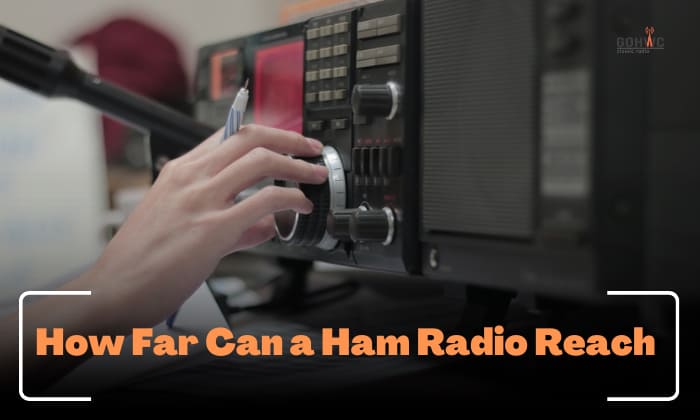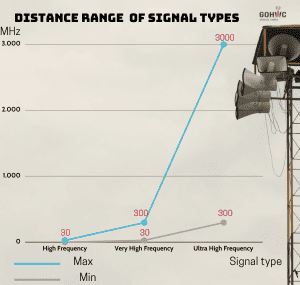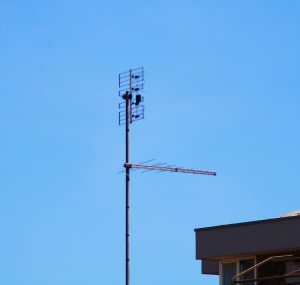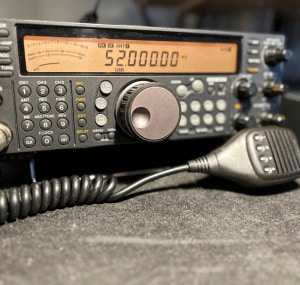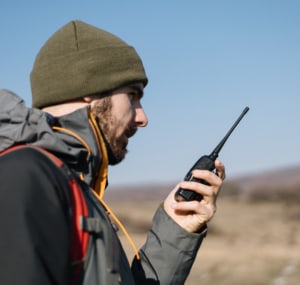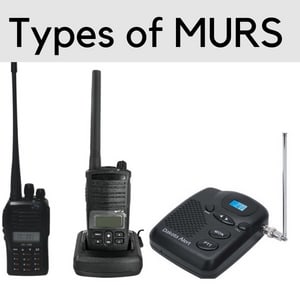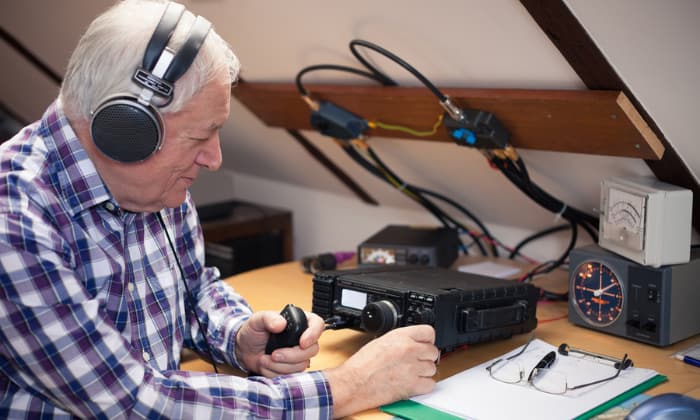For a time, electromagnetism was a theory until Heinrich Hertz proved the existence of radio waves, which gave rise to transmission equipment such as ham radios.
Communicating through radio waves was pioneered by Guglielmo Marconi, who developed radios as we know them today. He is the first to test how far can a ham radio reach, and as the technology improves, it can now hit up to 4,000 miles.
Indeed, radio is yet to have its time and power.
Contents
Calculating Ham Radio Distance
Ordinary ham radios can reach up to five miles, and with sophisticated equipment, it can span up to thousands of miles. They can even reach space at their longest range.
Realistically, an ordinary setup, say a portable ham, will provide up to two to 18 miles of coverage. Those with a powerful setup can maximize their range. The guiding principle is this: the lower the frequency, the farther its reach.
The distance can be calculated with this formula:
D = √H x 1.415, where D is the distance in miles, and H is the height of your antenna in feet.
You can use this calculator to find out the range of your ham radio.
Line of Sight Calculator – everythingRF
The formula supposes that there’s nothing on the way between your handheld transceiver (HT) and the horizon. Also, it does not take note of the other antenna you’re trying to reach and other factors that might affect communication, like the weather.
Take note that the higher the antenna’s position, the farther the line of sight.
Factors Affecting Range
Even those with a powerful long range ham radio base station are not safe from technical issues. Those operating with a basic setup can expect glitches because of four main factors.
1. Signal type
Radio signals have different characteristics in the way they travel and react when in contact with materials.
It needs to be explained that Earth’s curvature affects radio signals. Radio waves follow the planet’s curve, making it an obstruction to the line of sight.
Frequencies less than two megahertz follow that curvature, and as such, it can easily span hundreds of miles away. It is used in transmission from the planet’s surface to the ionosphere (the upper atmosphere). As mentioned before, the lower the frequency, the farther the coverage.
High Frequency (HF) is used in long-distance communication like in aviation, broadcasting, meteorology, and citizens band (CB) and ham radios. The HF radio distance range spans three to 30 MHz and has a 10-meter to 100-meter wavelength.
Very High Frequency (VHF), ranging from 30-300 MHz with a wavelength of one to 10 meters, is used in industries such as FM radio and television broadcasting, air traffic, and land mobile stations.
Ultra High Frequency (UHF), ranging from 300-3,000 MHz with a wavelength of one centimeter to one meter, benefits satellite communication, TV broadcasting, and wireless phone communication (including walkie-talkies).
With such differences, operators should familiarize themselves with the range map for smooth communication.
2. Antenna
Issues with the antenna are common but are easy to fix. As a reference, take TV antennas, which you need to tune and adjust when there’s poor signal.
When ham radios are having trouble with reception, their antenna might need adjustment: extending it or placing it in a higher position. After all, its height is important in its line of sight.
3. Obstructions
VHF is ideal outdoors as it can penetrate objects, while UHF works best in tight spaces like urban areas and buildings. With this information, operators can maximize the power of their ham frequency.
Even so, obstructions still pose a challenge. Say, for example, when operating in a hilly area or in a factory that teems with metal. After all, radio waves cannot pass through metal (and other electrical conductors like water).
Radio waves, however, can easily penetrate nonconductors like concrete, bricks, and wood. Signal loss is also possible in mountainous or hilly areas. If the line of sight is unclear, there’s a high chance of poor reception.
4. Signal strength
There are many types of ham radios with varied wattages. Handheld hams operate around five watts of power, while 50 watts for mobile units. Furthermore, base stations at home operate around 100 watts of power. A 100w ham radio range means 10 miles of coverage.
The higher the wattage, the stronger the signal, but that doesn’t mean it can easily defeat obstructions. Think of mountainous terrain, a challenging prospect for a ham radio frequency range unless the unit has a strong wattage.
Ham Radio Frequencies
There are various frequencies, but not every frequency is available for ham radio enthusiasts. They are allocated by governments, with the International Telecommunication Union overseeing radio spectrum usage.
In the United States, for instance, the Federal Communications Commission’s allocation starts at the AM radio band of 1.6 MHz up to 1,240 MHz.
Looking at the radio spectrum allocation is intimidating, but it’s vital to be familiar with it because of regulations.
There are different band plans for each ITU region.
- The frequencies of 135.7 Hz to 28 MHz for HF and 50 MHz to 250 gigahertz for VHF and above are set for ham radios.
- In VHF, operators can use the 144-148 MHz range, while in UHF, they can cover 430-440 MHz (up to 450 MHz in the US).
- In SHF (in the US), ham radio allocation is varied, from 3.3-30 GHz, except the frequencies between 3.45-3.5 GHz and 76-77 GHz.
Two-way Radios: Ham vs. CB vs. FRS vs. GMRS vs. MURS
Hams are the most powerful of them all, so it’s no wonder why there’s such a thing as a ham radio license. It has a maximum power of 1,500 watts and has the longest range among its counterparts.
A mere 8w ham radio reach spans around 200 miles. How much more when the device is more sophisticated? With a powerful base station, operators can turn a unit into a long-distance ham radio, reaching farther in as many frequencies.
CB radios operate in many channels and don’t require a license, and it won’t satisfy those who want to reach farther.
However, the CB radio’s 50-mile range (up to five miles only handheld) is enough for those trying their hands at amateur radio, but they should not always expect a clean channel.
CBs have a maximum power of four watts and can operate on at least 40 channels in the 26-27 MHz frequencies. It’s a good start for novice operators.
1. FRS
Those who want to try radioing but are non-committal should give family radio service (FRS) a chance. FRS only operates on 15 channels at its strongest wattage (2W at 462 MHz). Operating at half-watt means working with seven channels at 467 MHz.
Being a short-range and low-quality device, it does not need a license.
2. GMRS
Meanwhile, general mobile radio service (GMRS) only has a 25-mile range. It requires a license even as it has a limited scope compared to CBs. It can work with 22 channels from 462-467 MHz. It has a maximum power of 50 watts, with a minimum of half a watt, depending on the channel.
It only works within short distances and has a clean line and good reception. It can also communicate with FRS. However, it’s not as popular as hams, so the community is not that big.
3. MURS
Lastly, there’s the least-known multi-use radio service (MURS). Its channels (around five) are not busy and are VHF (at 152 MHz). This two-watt device doesn’t need a license and only works within a three-mile range. Given its limited capacity, expect that its channels are not busy.
There’s something for everyone in the world of amateur radio. Users just need to choose the right partner.
Can I Extend the Range of My Ham?
When your standard ham radio can’t satisfy you with its range, there are ways to extend its coverage. Aside from the previously mentioned antenna tuning/adjusting, here are some other tricks:
- Use ham repeaters installed in areas with high elevation. It captures the signal of your radio and re-broadcasts it, hence the name. With a repeater, a signal is relayed beyond the minimum.
- Use receivers which make weak signals powerful enough to be received by the other line. This sensitive device, paired with a repeater, works wonders.
- Obviously, if you’re using MURS, FRS, or GMRS, consider an upgrade to FRS, GMRS, or ham, respectively. The stronger the unit, the better the range.
- Ensure you have good or high-charged batteries so your unit can get the most out of its high power mode (the preferred setup for better results).
Conclusion
So how far can a ham radio reach? It can cover thousands of miles with an adept setup.
A standard base station can span hundreds of miles, and improving it will maximize its capabilities. The first thing to adjust is the antenna because the higher its position, the farther the line of sight.
Adding a repeater and receiver means more coverage. Frequencies for amateur radio are limited, but with an extended range, enthusiasts will have their finest hour.

Hi there! I am Howe, and I am the founder of G0HWC. I have been a radio enthusiast for as long as I can remember. I live and breathe radio, always taking the chance to blabber about it when customers seek my radio mechanic services.
Five years into working as a radio mechanic, I realized that most people struggle to fully understand the different complex aspects of owning and using a radio, though they understand the importance of having one.
And it dawned on me: I can put my blabbering to good use!
I started G0HWC to blabber all I want and help others who are not yet well-versed in radio language in doing so.

